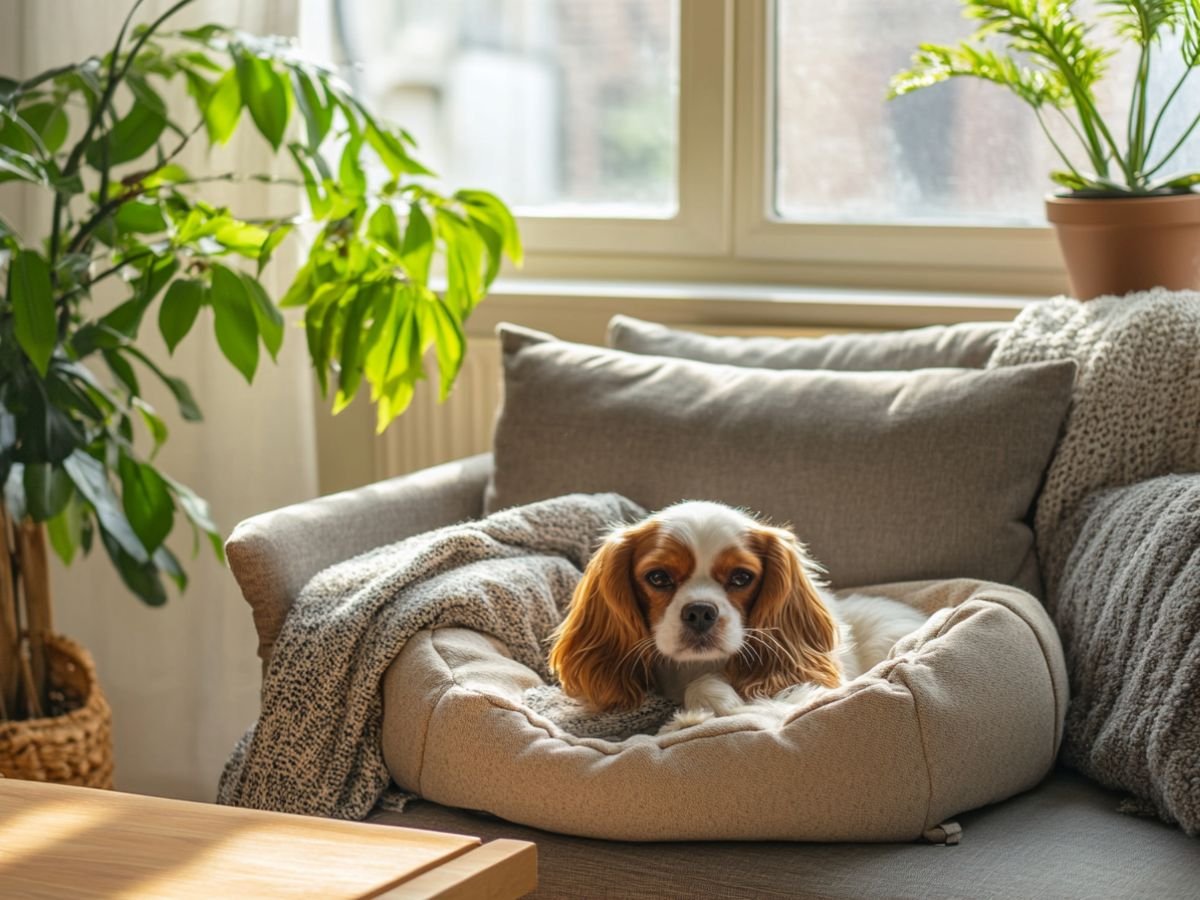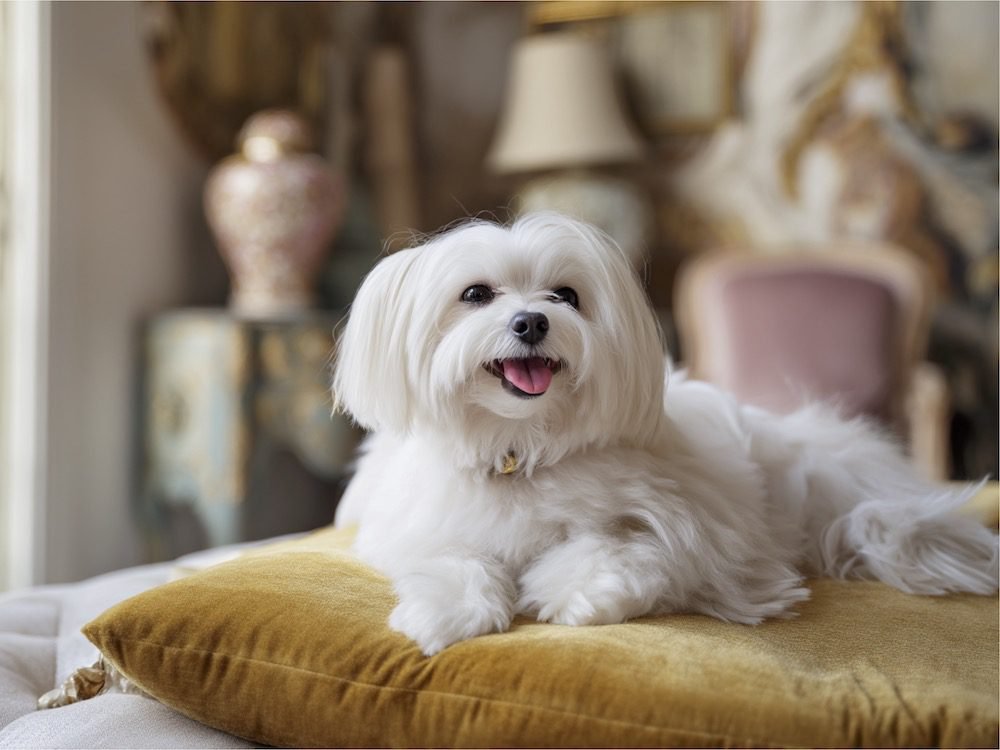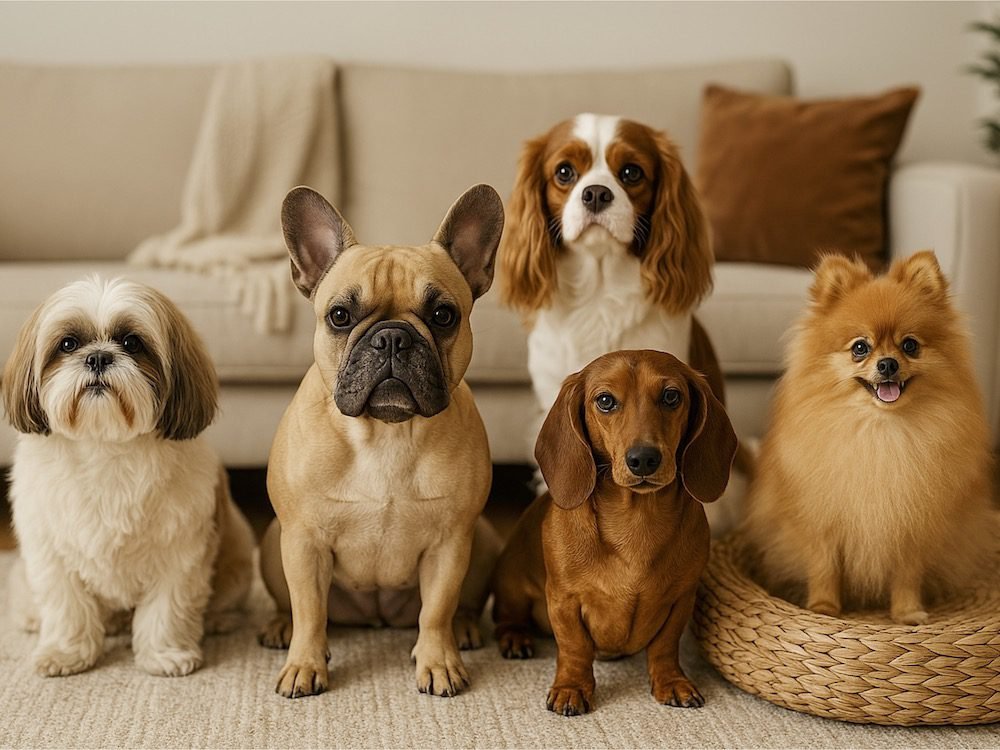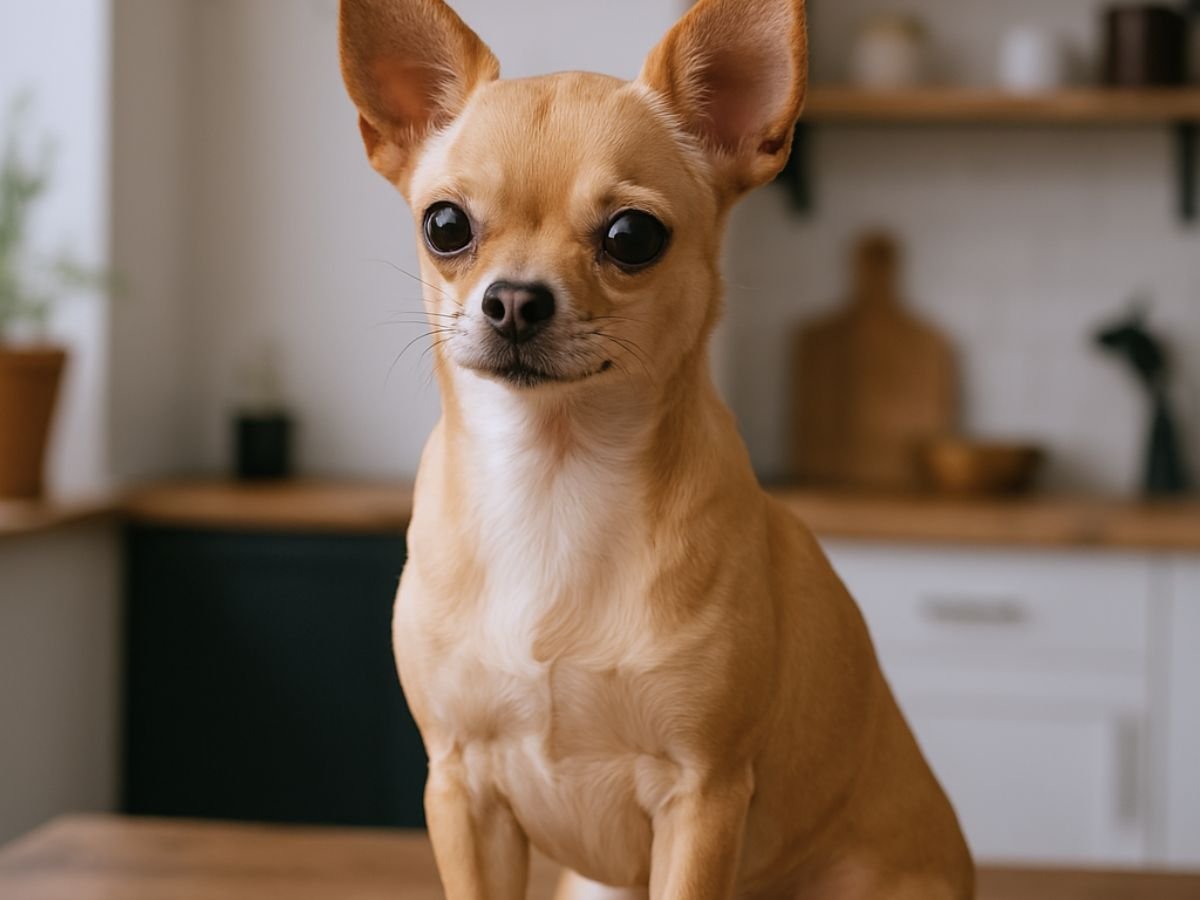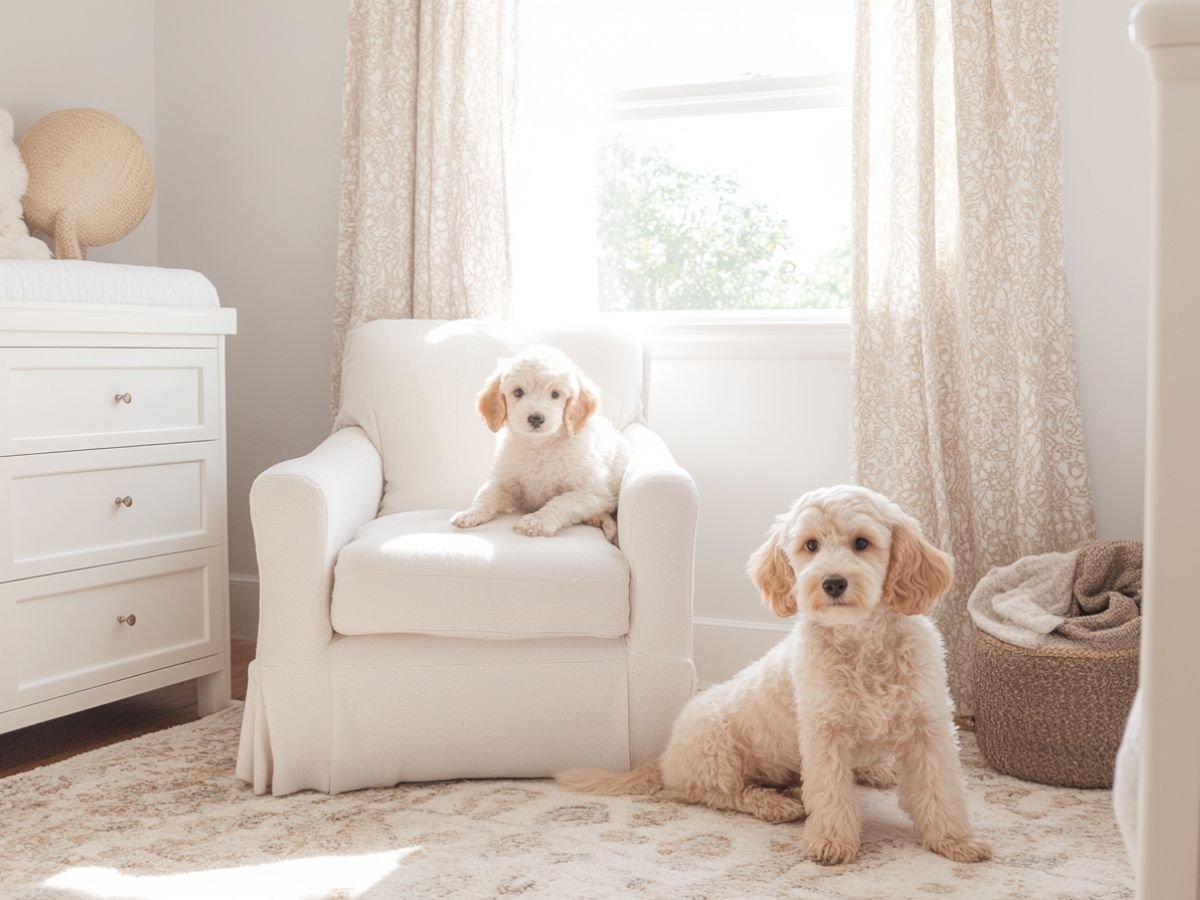Cavalier King Charles Spaniel: Your Velcro Shadow With a Spaniel Spark (2025)
You keep seeing those big, soulful Cavalier eyes on Pinterest and thinking… Is this the easygoing family dog I’ve been looking for—or just gorgeous chaos in a silky coat?
You’re not alone. Cavaliers look like plush toys, yet they’ve got enough spaniel zip to keep life fun.
The trick, IMO, is matching their affection and exercise needs to your real day-to-day.
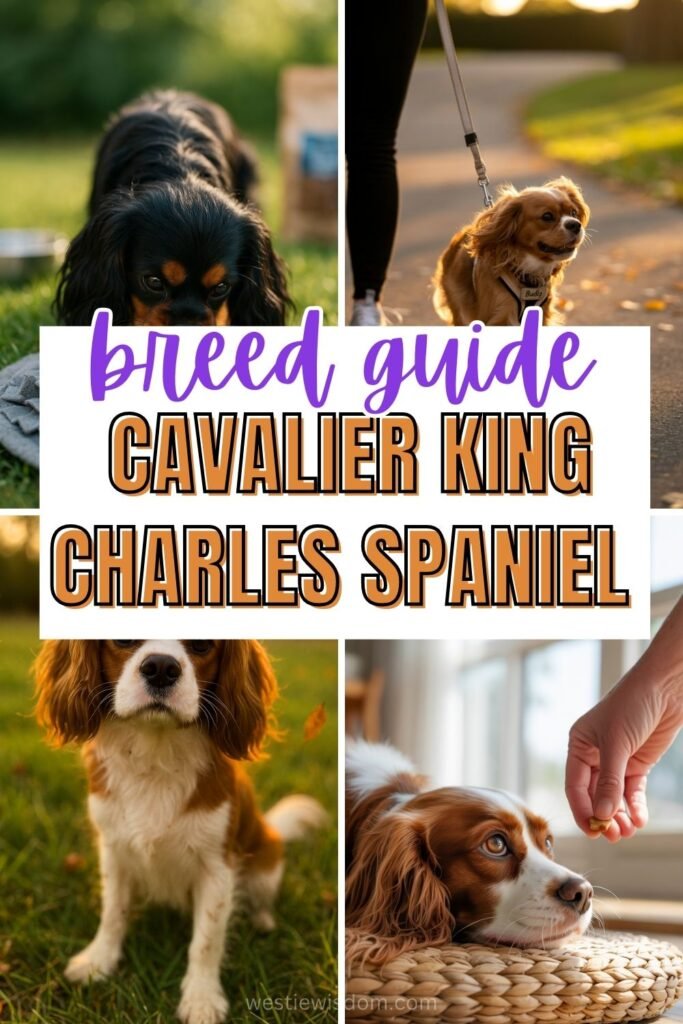
If you want a cuddly companion who learns fast, plays politely, and doesn’t need marathon runs, you’re in the the right place.
I’ll walk you through the Cavalier King Charles Spaniel temperament, training, grooming, health, costs, and how to decide if a Cavalier fits your life and budget. I’ll also point you to practical resources on puppy and dog training, best dog food, and caring for your dog so you can start strong .
Cavalier at a Glance
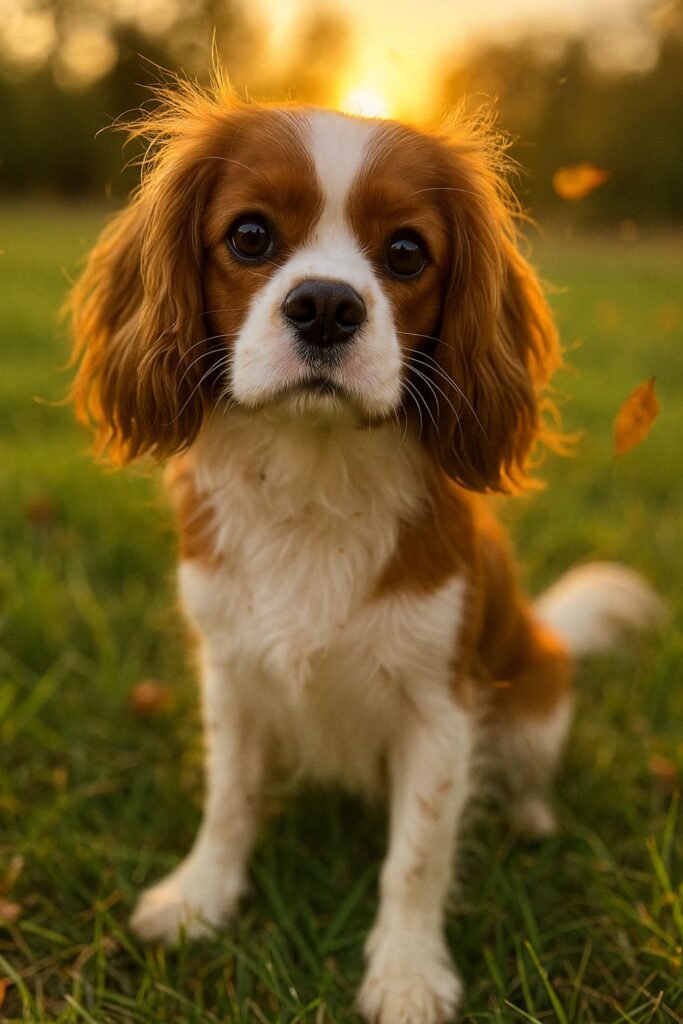
Group & origin: Toy Spaniel; UK
Size / height: 13–18 lb; 12–13 in
Lifespan (avg.): 12–15 years
Coat & shedding: Silky, medium‑long; moderate shed; not hypoallergenic
Daily energy: 45–60 minutes (sniffy walk + play/training)
Trainability: Easy (food‑motivated)
Barking tendency: Medium
Good with kids/dogs/cats: Yes, with supervision & socialization
Apartment‑friendly: Yes
First‑time owner friendly: Yes
Why people love them: Silky snuggles, soft temperament, and sweet, social vibes without high‑octane chaos.
Data points cross‑checked with AKC breed info, the AKC breed standard, and the UK’s Kennel Club profile.
Origin & History

Cavaliers trace back to the toy spaniels seen in 16th–17th‑century portraits (hi, King Charles II). Over time, fashion pushed faces flatter. In the 1920s, Roswell Eldridge offered a prize at Crufts for the old‑style, longer‑muzzled spaniel from those paintings. Breeders delivered, and the Cavalier King Charles Spaniel rebounded. The breed gained major traction after WWII and earned AKC recognition in 1995 in the U.S. (AKC; FCI standard)
Why it matters: that companion lineage explains their people‑first mindset. You’ll see easy affection, soft responses to training, and just enough spaniel curiosity to enjoy scent games and brisk walks—without the all‑day field‑dog drive.
Temperament & Everyday Behavior
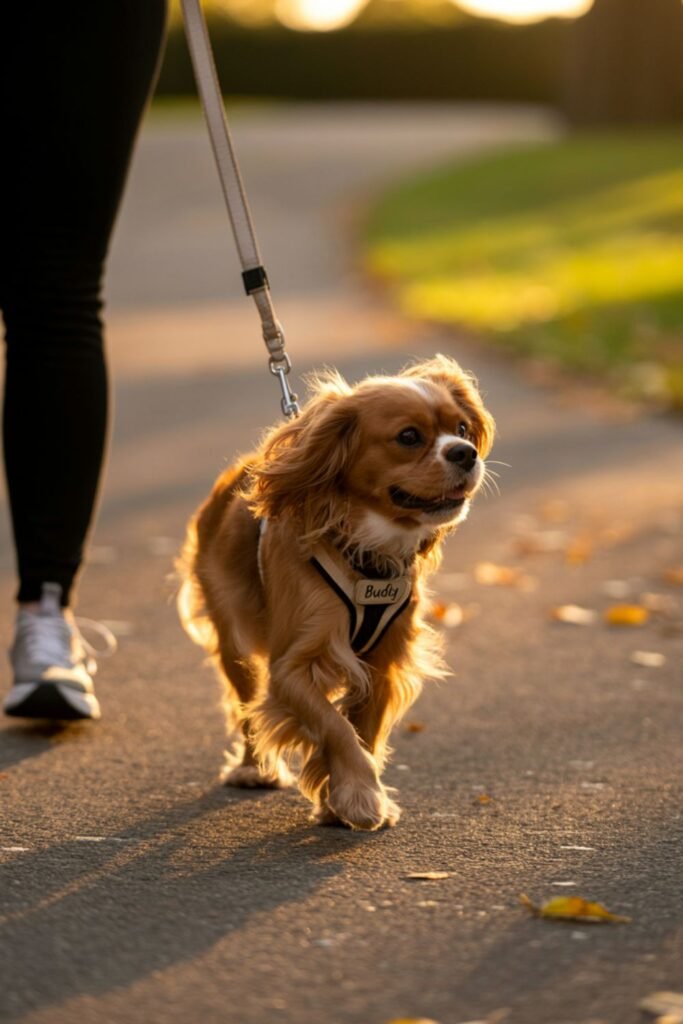
If you want a dog who sticks close and reads the room, Cavaliers deliver. They adore company and settle beautifully after a good walk and a few brain games. They don’t usually run the household like some terriers (Monty, I’m looking at you 🙃), but they’ll definitely follow you from sofa to kitchen and back.
What you’ll notice:
- Affection: off‑the‑charts cuddler. Perfect for families who enjoy a dog under the desk or on the couch.
- Sensitivity: they thrive on gentle, upbeat training. Harsh corrections shut them down; praise and tiny treats light them up.
- Barking: typically moderate. They’ll chime in for doorbells or excitement. Teach a “quiet” cue early and meet enrichment needs to prevent nuisance barking.
- Chase instinct: milder than working spaniels, but it’s still a spaniel. Use a long‑line until recall rocks.
- Alone time: they can struggle if you don’t teach it. Build up slowly with micro‑departures and food puzzles.
Must‑teach cues (week one):
- Name → Recall: treat it like a party—cheerful voice, high‑value rewards.
- Settle/Place: a mat turns chaos into calm, anywhere.
- Leave It: protects them from street snacks and wildlife.
Socialization sweet spot (8–20 weeks): strangers with hats, teens on scooters, doorbells/vacuums, gentle handling of ears/feet/mouth, calm adult dogs, and dog‑savvy cats. Pair each “new thing” with food + fun. For deeper dives, hop to my training basics and stop barking guides.
Exercise & Enrichment
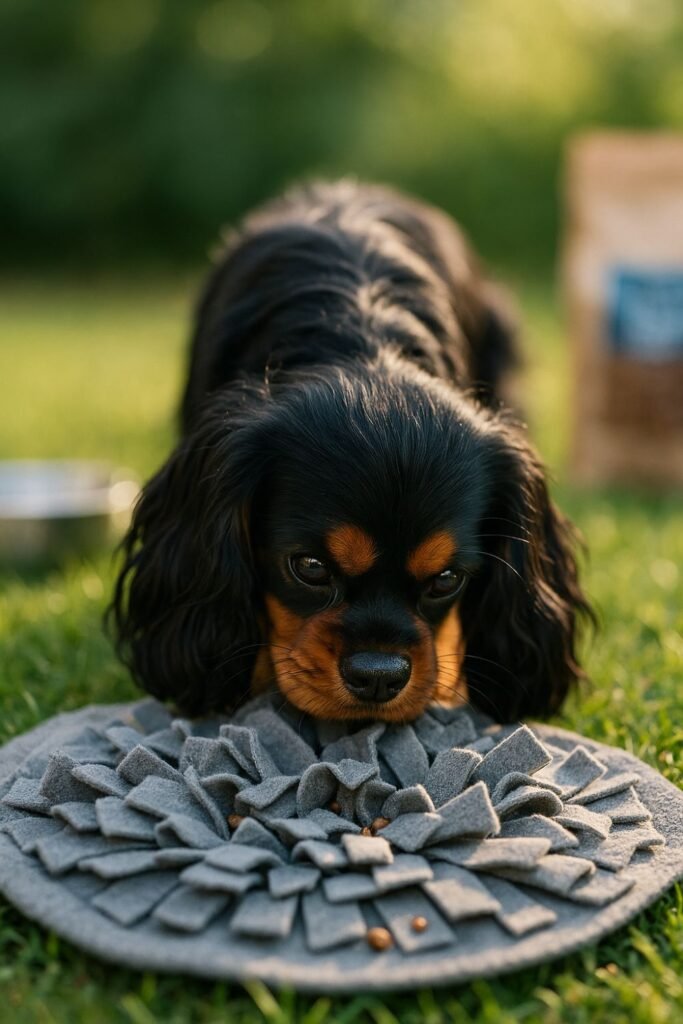
You don’t need to run 10Ks. You do need consistent, moderate activity.
Daily target: 45–60 minutes across a sniffy walk and play/training. Most Cavaliers love find‑it games, short fetch, and beginner sports like rally or scentwork. The Kennel Club pegs exercise at up to an hour a day for typical pets (KC profile). That matches real life in U.S. homes.
Puppies: stick to the 5‑minute rule per month of age for structured activity; keep surfaces non‑slippery and jumps low.
Adults: mix cardio (walks), brain work (training/scent), and chewing (safe, vet‑approved options). Avoid repetitive high‑impact leaps.
Seniors: shorter, more frequent strolls + scent games. Ask your vet how to pace exercise if your Cavalier has mitral valve disease (more below).
Fast enrichment ideas:
- Scatter‑feed kibble in the yard or a snuffle mat.
- Play a 3‑treat shell game with cups.
- Do a two‑minute trick burst (spin, paw, chin‑rest) before naps.
- Drag a treat bag to make a DIY scent trail down the hall, then release to sniff.
Pro tip: Pay recall like rent—tiny, soft treats from your best dog treats list keep that come‑when‑called strong.
Grooming, Shedding & Coat Care
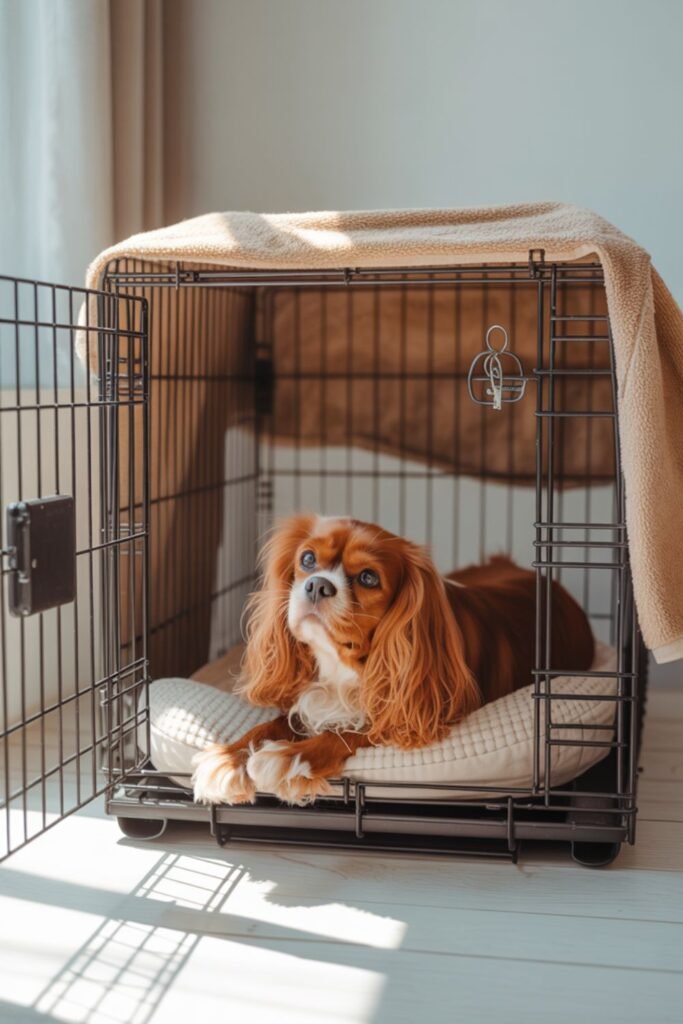
That silky, feathered coat needs regular love. Cavaliers shed moderately year‑round (not hypoallergenic), and long ears add extra ear‑care steps.
At‑home routine:
- Daily 5‑minute brush‑through for ears and feathering.
- Deep comb‑out 2–3×/week (behind ears, armpits, trousers, tail).
- Bath every 4–6 weeks with a gentle dog shampoo.
- Ear care after baths/rain—dry ear leather and use a vet‑approved cleaner as needed.
- Nails every 2–4 weeks; shorter nails = comfier joints.
Tools I rate (add these to your dog supplies list): slicker brush, metal greyhound comb, detangling spray, ear‑care solution, nail grinder or clipper. Many U.S. owners book a groom every 6–8 weeks for tidying and sanitary trims.
Allergy reality check: Cavaliers are not hypoallergenic. If you sneeze around dander, meet adult dogs first, clean often, and consider a HEPA filter.
Grab my Grooming Guide for step‑by‑step routines and beginner‑proof tools.
Health, Diseases & Lifespan
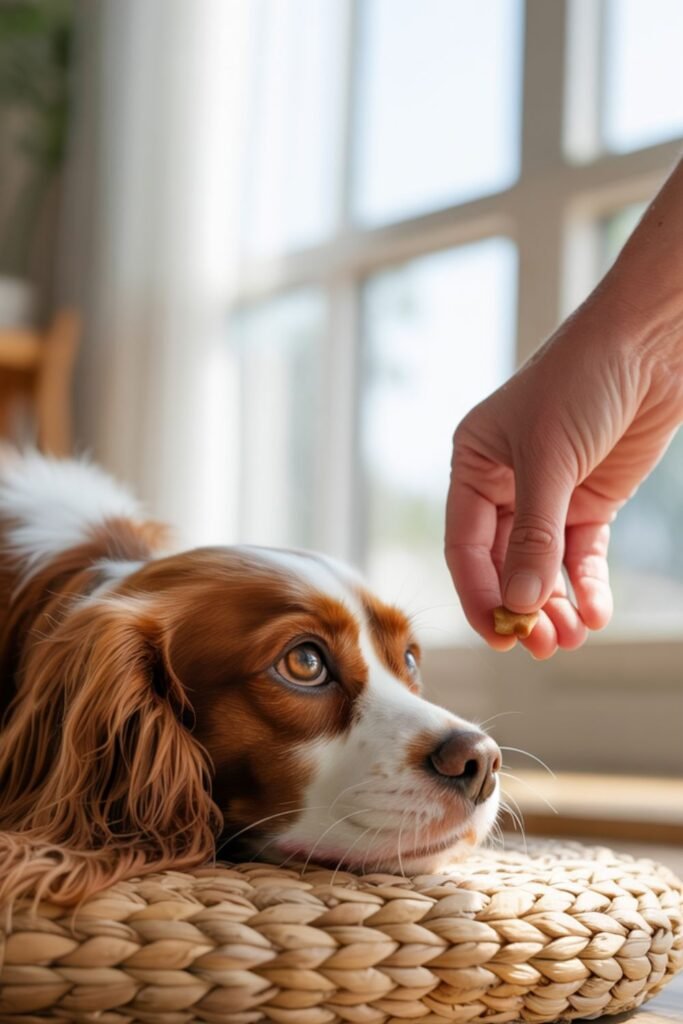
Average lifespan lands around 12–15 years for well‑cared‑for Cavaliers. Like many small dog breeds, they stay cheerful and sturdy day‑to‑day, but a few conditions deserve your attention.
Mitral Valve Disease (MVD/MMVD). Cavaliers sit over‑represented for this small‑breed heart condition. Vets diagnose it by hearing a heart murmur and, when indicated, confirming with an echocardiogram. Early management often keeps dogs comfortable for years (MSD Vet Manual overview of myxomatous valve disease).
Chiari‑like Malformation with Syringomyelia (CM/SM). Some Cavaliers show neurologic pain/itching (neck/ear scratching, yelps). Diagnosis uses MRI via referral. Your primary vet will guide whether to screen based on symptoms.
Eyes & Joints. Annual ophthalmology checks catch cataracts/retinal issues early. Patellar luxation and occasional hip dysplasia show up; keep floors grippy, nails short, and weight lean. VetCompass data from UK primary‑care practices lists heart murmur, otitis externa, dental disease, conjunctivitis, and GI upsets among common clinical findings in Cavaliers (VetCompass summary; PubMed paper).
Responsible screening (what good breeders/rescues share):
- Cardiac: cardiologist exam; echo where indicated.
- Eyes: CAER exam by a board‑certified ophthalmologist.
- Patellas: OFA.
- Hips: OFA/PennHIP for breeding stock.
Check the parent club and health pages for detail: AKC breed standard/parent club links, the UK Cavalier Club’s testing guide, and the ACKCSC health statement hosted on AKC (PDF).
Owner watch‑outs: coughing, tiring on walks, faster resting breaths (heart); head/ear rubbing or yelps with excitement (CM/SM); head shaking or odor (ears); bad breath and tartar (teeth). Keep insurance in mind—it can buffer surprise costs.
Mini cost snapshot (diagnostics/treatment):
- Echocardiogram: ~$500–$1,200.
- Patella surgery (if needed): ~$1,500–$3,000+.
- CAER eye exam: ~$75–$300.
- Routine dental cleaning (no extractions): ~$300–$900.
Prices vary by city. Always get a written estimate.
Feeding & Nutrition
Your Cavalier will happily tell you they’re starving…after lunch. Keep them lean. Aim for Body Condition Score (BCS) 4–5/9—you should feel ribs with a light fat cover and see a waist from above. The WSAVA toolkit has a simple BCS chart you can print (dog BCS PDF).
Puppies: choose an AAFCO‑compliant puppy food; feed 3–4 meals/day and chase steady growth, not speed.
Adults: pick a complete & balanced food from a brand with transparent quality control and nutrition expertise. Split into 2 meals/day. Use tiny training treats and deduct them from the daily ration.
Seniors/Heart care: if your vet diagnoses MVD, they may suggest cardio‑friendly diets and sodium management. Always consult your DVM before dietary changes for medical issues.
Budgeting tip: buy the smallest bag that stays fresh within 4–6 weeks, and watch for autoship savings at U.S. retailers like Chewy or Petco. Food waste = sneaky budget drain.
Training Essentials
Cavaliers learn fast because they want to please and love food. That combo makes day‑one wins easy.
House‑training: go out after sleep, play, and meals. Stand still; reward the exact second they finish. Use an enzyme cleaner indoors.
Crate comfort: make the crate a safe den, not a penalty box. Feed meals inside and offer a safe chew. Place it where life happens.
Alone‑time skills: start with micro‑departures (30–90 seconds). Use a snuffle mat or stuffed chew. Build up to realistic work breaks.
Loose‑leash intro: reward the position you like every 2–3 steps. Keep sessions short, fun, and frequent.
Three quick wins:
- Rocket recall paid with high‑value treats.
- Settle on a mat for coffee shop hangs.
- Leave it to prevent street‑snacking.
Common pitfalls:
- Over‑coddling worried pups without pairing new stuff with food + fun.
- Free‑feeding—harder toilet timing, easier weight gain.
- Skipping socialization because the puppy “seems fine.” Put it on the calendar.
For step‑by‑steps, see training basics, stop barking, and my best dog treats picks. When I trained Monty’s recall, I paid like a vending machine at first…and it stuck.
Living With a Cavalier: Fit Check
Home type: apartments or houses work. You’ll need secure doors/yards because spaniel noses wander.
Time at home: Cavaliers shine with company. Full‑time workers can succeed with dog walkers, puzzle feeders, and a realistic alone‑time plan.
Climate: protect from heat; walk early/late in U.S. summers and offer shade + water. Dry ears/paws in rainy or snowy weather.
Travel: easy road‑trip dogs if you crate‑train early. Use a crash‑tested harness or secured crate.
Self‑check (Yes/No):
- Do I want a companion‑first dog who sticks close?
- Can I do 45–60 minutes of daily exercise/enrichment?
- Am I okay with regular brushing and professional grooms?
- Can I budget for routine vet care and possible heart work‑ups?
- Will I train alone‑time so my dog can relax when I’m out?
- Do I have a plan to keep weight in the sweet spot?
If most answers read “yes,” you’re likely Cavalier‑compatible.
Pros & Cons (It Depends on You)
Pros
- Sweet, gentle temperament; great for families and first‑time owners.
- Adaptable to apartments and suburbs.
- Easy to train with positive methods.
- Moderate exercise needs; fun in beginner sports.
Cons
- Regular grooming and ear care (time + budget).
- Can develop separation issues without training.
- Breed‑linked health risks require informed vet care.
- Not hypoallergenic; expect moderate shedding.
Real‑World Costs (Budgeting for Dogs)
| Category | Item | Typical Range (USD) |
|---|---|---|
| One‑off | Adoption (rescue) | $150–$600 |
| One‑off | Purchase (reputable breeder) | $1,800–$3,500+ |
| One‑off | Spay/Neuter | $150–$700 |
| One‑off | Microchip | $25–$60 |
| One‑off | Starter kit (crate, bed, bowls, leash, ID) | $150–$350 |
| Monthly | Food | $30–$70 |
| Monthly | Insurance (US) | $40–$60 average |
| Monthly | Parasite prevention | $10–$30 |
| 6–8 wks | Grooming | $55–$95 basic/full groom |
| Occasional | Training classes | $120–$200 per course |
| Occasional | Dental cleaning | $300–$900 |
| Occasional | Boarding/pet sitting | $45–$90/night |
What pushes costs up? Big‑city vet pricing, emergency care, and frequent professional grooms. What brings costs down? Insurance, DIY grooming basics, autoship food discounts, and preventative dental care.
Adoption & Ethical Breeders
Rescue routes (U.S.):
- Cavalier Rescue USA and the ACKCS Rescue Trust place evaluated dogs from fosters.
- Set alerts on Petfinder and filter by distance/health needs.
Ask rescues for medical history, recent dental work, any heart murmurs, and ear/skin care plans.
Breeder checklist (no shortcuts):
- Current cardiac clearance by a cardiologist (not just a general exam).
- CAER eye exam, patellas (OFA), and often hips (OFA/PennHIP) for breeding stock.
- Written contract, return clause, and lifetime support.
- Puppies raised in‑home with early socialization, vet checks, and microchips.
Cross‑check with the parent‑club/health guidance: U.S. ACKCSC health statement (PDF) and the UK club’s testing guide. Red flags: cash‑only, no proof of tests, multiple litters on site, no questions for you, and pressure to decide today. Hard pass.
Heart Dog, Found.
Feeling that soft yes? Same, kinda.
Keep momentum: match your routine, your walkies, your couch (snacks later, promise).
For caring for your dog long-term, a quick size/energy check saves drama.
Read next: compare friendly small dog breeds here → https://westiewisdom.com/small-dog-breeds/
FAQ’s About Cavalier King Charles Spaniels
1. Do Cavaliers bark a lot?
Generally they land in the middle. You’ll hear an alert bark for doorbells or excitement. Meet daily exercise needs and train a “quiet” cue so it doesn’t become A Thing.
2. Are Cavaliers good with kids and other pets?
Yes—with gentle handling, supervision, and good socialization. Most accept friendly dogs and dog‑savvy cats. Always teach children to respect a dog’s space.
3. How much exercise do Cavaliers need?
Plan 45–60 minutes total daily. Split it into a sniffy walk plus play/training. Puppies need shorter, age‑appropriate bursts.
4. Are Cavaliers hypoallergenic?
No. They shed moderately. If you have allergies, meet adults first and run a HEPA filter at home.
5. Can Cavaliers stay home alone while I work?
They cope if you train for it. Start with micro‑departures, offer puzzle feeders, and hire a dog walker or use a midday drop‑in for longer days.

